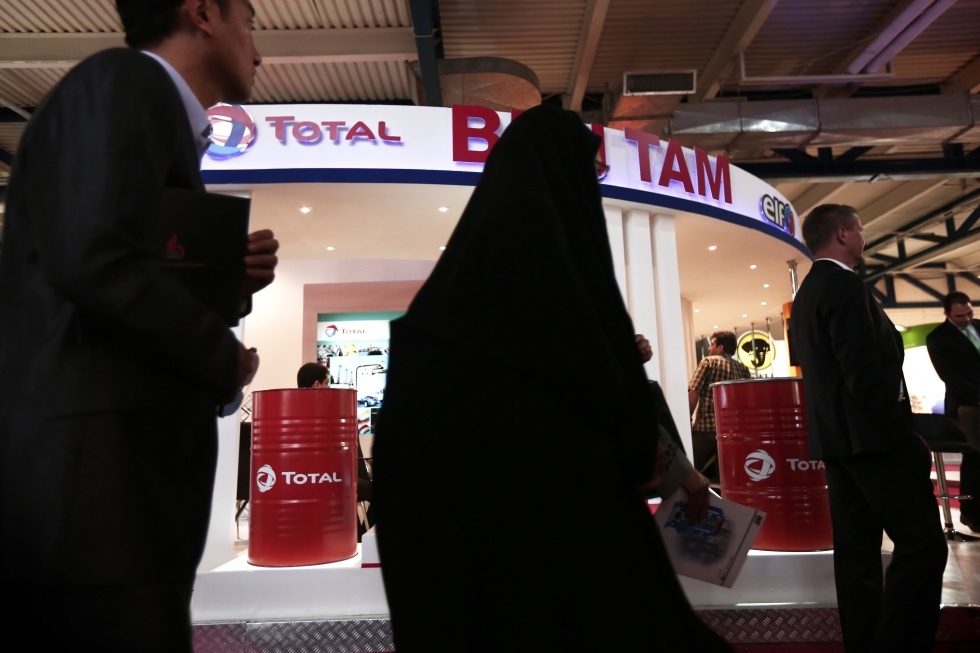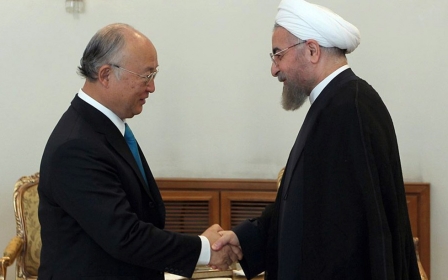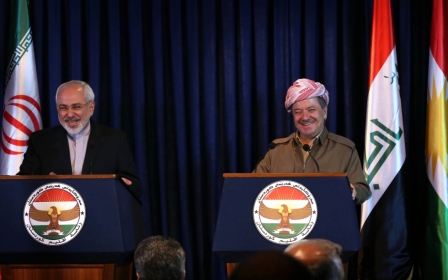Iran launches Middle East's largest liquefied natural gas facility

Iran announced the launch of the Middle East's largest liquefied natural gas storage facility in country's northeast bordering Turkmenistan at an inauguration ceremony on Sunday.
The liquefied natural gas (LNG) storage facility, named "Shourijeh", can supply 4.8 billion cubic meters of natural gas and aims to reduce gas imports from Turkmenistan.
With the opening of the new facility, Iran becomes the Middle East's leading country in terms of gas storage capacity.
Iran plans to boost its natural gas production by 200 million cubic meters by March 2016 in order to eliminate the need to import Turkmen gas which currently supplies 5 percent of the country's demand.
Shourjieh will provide 20 million cubic meters of gas storage per day in winter and 10 million cubic meters of gas in summer, state news agency IRNA reported.
In comparison, 50 billion cubic meters of natural gas - or nearly twice what Shourjieh will provide each year - is slightly more than Turkey's entire annual consumption in 2012.
Seasonal natural gas supply shortages in winter occur in Iran mostly because of the delay of the South Pars project which is located in the Persian Gulf and shared with Iran and Qatar.
Additionally, Iran's natural gas imports declined by 50 percent in 2012 compared with the previous year, reflecting that lower volumes are being imported from Turkmenistan because of U.S and EU sanctions on Iran's financial transactions.
The country has the largest volume of trade exchange with Turkmenistan after Russia. Turkmenistan's main exports to Iran are oil and petrochemical products.
Iranian natural gas boom
Iran holds some of the world's largest deposits of natural gas with an estimated 33 trillion cubic meters of gas reserves, ranking fourth in the world for gas reserves, and the second-largest natural gas reserve storage facilities world-wide, according to the BP statistical review of world energy published in June 2014.
The inauguration of the facility comes as the country looks to develop international links for the export of its own natural gas.
In early September, Iranian Oil Minister Bijan Namdar Zanganeh announced that Iran will “soon” begin supplying Oman with 20 million cubic metres of natural gas, marking the culmination of increasingly close ties between the two countries.
The announcement came in spite of the fact that a proposed 260km pipeline between the two countries has yet to be constructed. It could take almost 3 years to build.
Oman has suggested that half the gas transferred to the country will go to other markets such as Japan, South Korea and India.
In August 2013, Zanganeh and his Omani counterpart signed a ‘Memorandum of Understanding’ (MoU) to help finalise the gas contract between the two sides.
Few countries are able to trade in oil or gas with Iran due to sanctions placed upon the country.
Prospects for processing LNG in Iran had been thought by many to be weak as a result.
Tony Regan, an energy analyst at Tri-Zen International Pte, was quoted in Bloomberg in July 2013 saying that the country “had missed to boat.”
“They should have slotted in nicely between Qatar’s projects and the new Australian ones and before anyone was talking about US exports,” Regan added.
Sanctions, he said, had driven away partners with the know-how Iran needs to develop LNG and, in addition to lacking technology, the Iranian lacked funds.
“If Iran gets itself sorted out with Western powers and gets itself back into alignment with the rest of the world, the sky's the limit for them,” said Zach Allen, president of PanEurasian Enterprises Ltd. an American tracker of LNG shipments.
“The high cost of entering that market comes from the need to build all new infrastructure. They don’t have the skills to build that on their own.”
New MEE newsletter: Jerusalem Dispatch
Sign up to get the latest insights and analysis on Israel-Palestine, alongside Turkey Unpacked and other MEE newsletters
Middle East Eye delivers independent and unrivalled coverage and analysis of the Middle East, North Africa and beyond. To learn more about republishing this content and the associated fees, please fill out this form. More about MEE can be found here.




